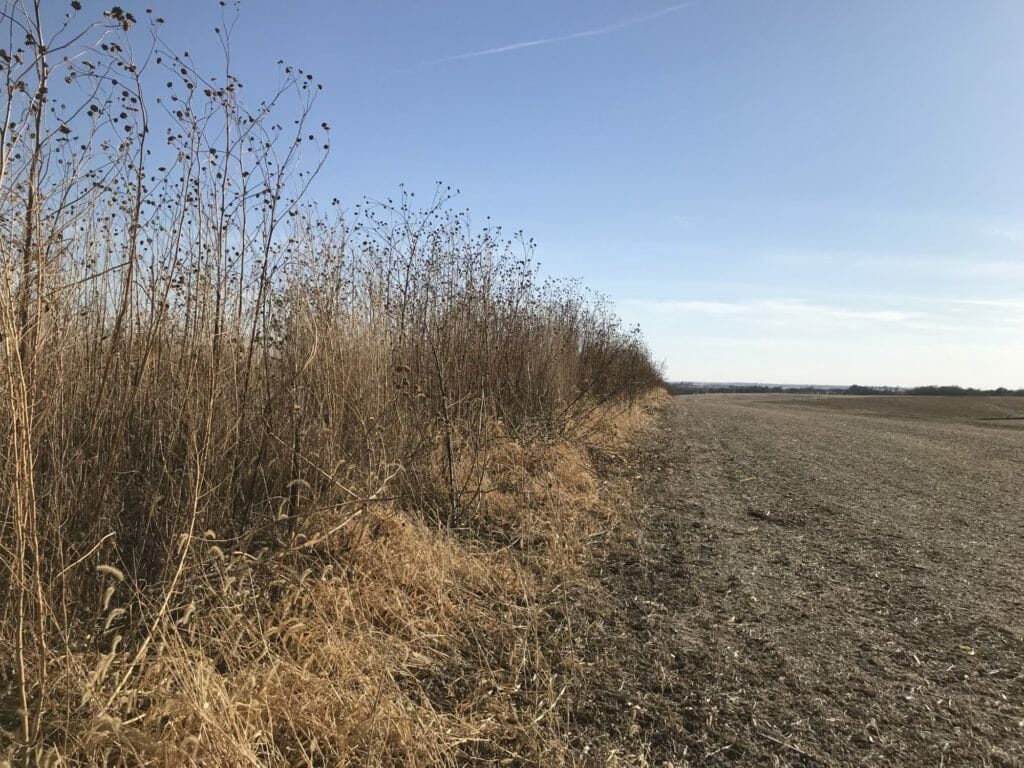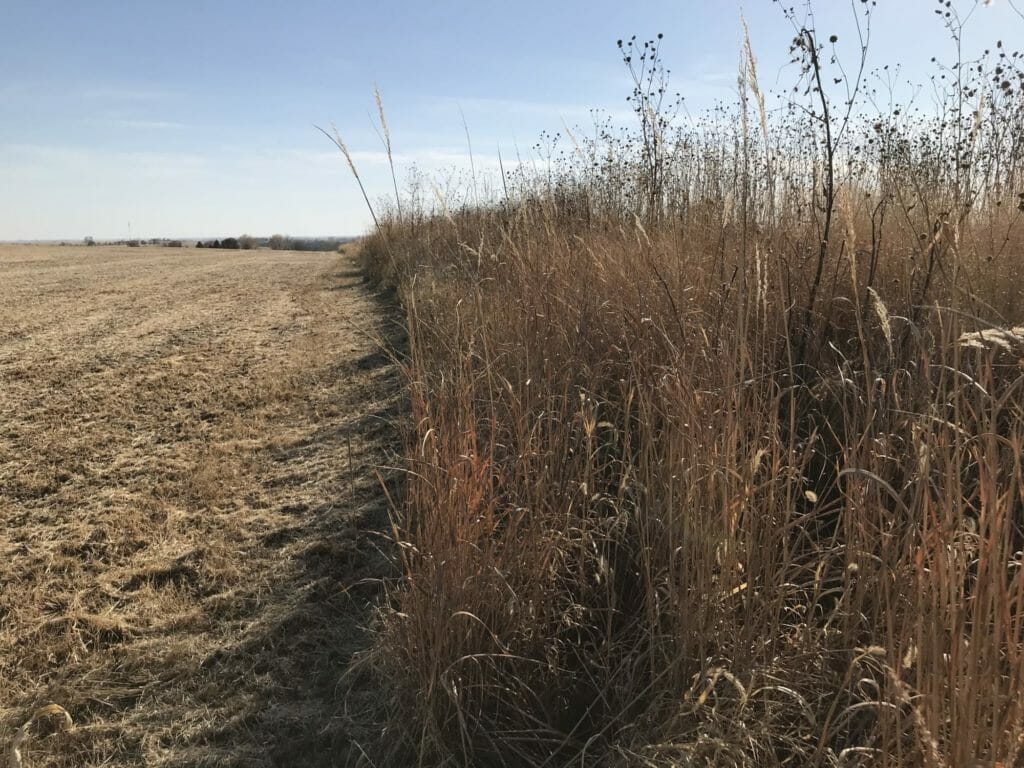The Benefits of Keeping Trees, Shrubs and Native Grasses on Your Farm
Take a drive down highway 29 in Northwest Missouri, and you’ll see plenty of sights commonly seen right here in Iowa. Farmsteads with rolling hills of corn and soybean create a patchwork familiar to most. But drive past PFI member Randy Church’s farm, and you may notice it to be a bit of an oddity. There’s the traditional farmhouse, a barn complete with two grain silos, and a tractor parked out front. Though Randy’s fields still have the well-groomed look of a working farm, orderly rows of native prairie grasses flourish, where soybean once dominated, and trees grow in thick stands all around the property.
“This farm belonged to my dad, and after he passed, my sister and I continued to work it. We grew the usual corn and soybeans. Then in 2021, we decided to take it out of production completely. We need to put something back in this world, and for me, that’s the trees and wildlife. We have two other farms operating in Nebraska and Iowa, both with corn and soybeans, so we felt this one could be given back to nature.”
The Church’s Missouri farm originally consisted of 120 acres, all in production. Now, all 120 acres have been dedicated to conservation, with 35 in CRP, 20 acres in meadow and native prairie grasses and the remaining 65 in timber. The Church’s have also installed four ponds over the last ten years.
Randy didn’t start out wanting to cease all production of the farm. “It started one day when I went out to remove overgrown fence lines, and I saw a lot of pheasant. I hadn’t seen pheasants since I was a kid. Maybe or two here and there, but never on our property before. So, I left the fences to overgrow, then the trees, and then the whole farm! Now we have pheasant, deer, bobcats, bear, a little of everything.”
The Church family has implemented various habitats that have been shown to increase biodiversity on the landscape, but farmers and landowners do not need to return all their land to nature to see the benefits of the practices being used on the Church farm.
Trees as Multifunctional Buffers
The Church farm in Missouri is nearly half timber now, and Randy is delighted by that, but acknowledges that most farmers are not going to want to put half their land out of production. Luckily you don’t have to in order to see benefits from keeping some trees on a working farm, the first being that trees are a natural habitat for wildlife and pollinators. Many of the pollinators we depend on use trees, or more specifically, the bark, notches and holes in the trees, as overwintering habitat, as well as early spring nectar sources. This is especially true for maples and many species of willow. Birds, squirrels, raccoons and deer also use trees as foraging sources and shelter.
“Having all the trees has been great for all the birds here on our Missouri farm site. This morning, I’ve already seen three deer, quail, and a pheasant. In the summer, I see a lot of butterflies and bees around them as well, and it’s just nice to see that variety of life out your window every day.”
There is an economic upside to maintaining trees as well. Not only are you providing needed habitat and foraging opportunities for area pollinators and wildlife, but you can make additional income on strategically placed trees. A multifunctional riparian buffer are the trees and shrubs along with other woody plants along any waterway, such as a pond, stream or wetland. A similar buffer can be maintained along field edges as long as the area gets enough rainfall. The products of these trees, namely fruits and nuts, can be harvested and sold alongside predominant crops such as soybeans, providing an economic incentive to habitat restoration.
Using Native Grasses as Habitat and to Improve Soil and Water Quality
Alongside the 65 acres that Randy has dedicated to timber, he has 20 acres that has been seeded with native prairie grasses. “I put in mostly CP 42 prairie mix in the open areas. Right now, half of it is taller than me, and in a few more years, the rest of the fields will be the same way. Its absolutely beautiful in the summer months when all the grasses out here are flowering, and it’s full of butterflies.”
Known as hedgerows, the practice of planting native grasses along the edges of production fields can help offset soil loss from tilling and natural forces such as wind. Prairie grasses have deeper roots than many crops or ornamental grasses, acting as an anchor and keeping vital topsoil in place. Hedgerows do not require as much maintenance as tree cover, use less vital water, but provide just as crucial habitat as trees.
For farmers wanting to put native grasses on the agricultural landscape, smaller areas of precision conservation can be implemented as well as prairie strips. Planting tall native grasses alongside field edges, roadways and wetland areas of your farm not only gives additional pollen and nectar sources for beneficial insects and pollinators, but also serves an important role in improving soil and water quality.
Randy says he sees the difference in soil volume and quality on his farm with the addition of native grasses. “On the Missouri farm, the old soybean fields have not lost much in the way of soil since putting the CP42 mix in around them. There is a lot of soil caught up in the base of the grasses though that I see blow in from neighboring farms without the grasses. The grass on my fields acts as an anchor for my properties soil and a stopping barrier for my neighbor’s soil.”
“You don’t have to convert all your land to benefit your land. I was lucky in that I got to turn over one of my properties entirely to conservation, but in the end, your profit margin matters. Profit and conservation can go hand in hand, just by putting in small scale habitat that nurtures the land, without hitting your bottom line.”
If you are interested in providing habitat, improving the soil and water quality of your farm and generating possible extra income, implementing smaller scale versions of timber land and native grass strips might just be the way to go.
For more information on how riparian buffer strips and native grasses can improve soil and water quality on your farm, click here and here.



